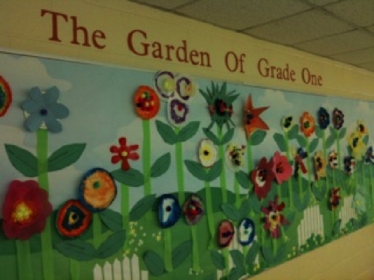Recent posts about assignments and parental involvement had me reflecting on my own dilemmas about homework assignments and how my philosophy toward student homework has evolved depending on the students, the grade that I am teaching and my own experience. There are many factors that can influence the kind of homework students could/should receive, and that can be the students’ grade-level, ability, community access, level of support at home, the management of the classroom environment and extracurricular commitments, to name a few. It’s up to the teacher’s professional judgement to decide what is appropriate. For me as a teacher, additional influences such as experience (or inexperience) with a grade level, access to resources, ability to plan ahead and knowledge of what is actually ‘useful homework’ versus ‘make work’ influence the type of work that is sent home with the students. I am discovering that all of the factors contribute to the continuous shifts and swings in the planning and pacing of class work and assignments.
In my first year of teaching, homework only came in the form of research for class work and completion homework. The intended outcome of this kind of homework was to ‘help the students keep up with the classroom program’ (Heart and Art, p.80), which often backfired. Some of the same students who consistently did not complete their work in class also had evening commitments, parents with little spare time to supervise them and were forgetting to bring work back to school, resulting in further disruptions. Frustrations mounting, I quickly learned the importance of differentiation in the classroom and learning a better system for staying on top of the students’ progress.
In my second year of teaching, with little time and knowledge of how to access building materials for a unit that required the building of bridges, ‘Building a Bridge’ became the month-long home assignment. My assessment of the assignment required a lot of thought (weighing and grading the different aspects of the assignment) and planning, as most of the bridges that arrived in my classroom were worthy of a passing grade in an architectural course. The students’ grades were heavily derived from their classroom research and ability to orally explain the mechanics behind their work. While it was a successful assignment that enabled the students to work with and learn alongside their parents, I felt conflicted knowing that the parents/caregivers also sacrificed their evenings and weekends to support their children.
So much of what we as teachers learn is through trial and error, and most of what we learn, remember and refine is from the ‘errors’ that we make along the way. Now, the homework that I assign falls in the categories of practice, preparation and extension, which I discovered through my trials and errors, and also from the partnerships that I have this year (i.e., learning from what other’s have discovered to be successful). Weekly, my students are sent home with a language activity that reinforces and extends a concept learned in class, and a math activity (that is intended for family participation and problem solving). The math activity reinforces the skills of explaining thought processes (e.g., pictures, numbers and words to explain their solution), and is intended to prepare the students for the continued expectations through the grades. Preparing these materials isn’t too taxing of my lesson planning time, the homework is encouraged but not mandated, and through this, I hope to be considerate of ‘family time and commitments’ while giving the students (and their parents) means to practice and support classroom learning at home.
I realize that the next grade I teach will require more re-working and re-programming to find a good-fit homework outcome, and I am learning that this is normal. In planning the kind of learning that takes place outside of the classroom, I will continue to consider the many factors that influence successful ‘homework outcomes’ and utilize the tips and insights of my trusted colleagues who also continue to work and re-work their methods and planning.







